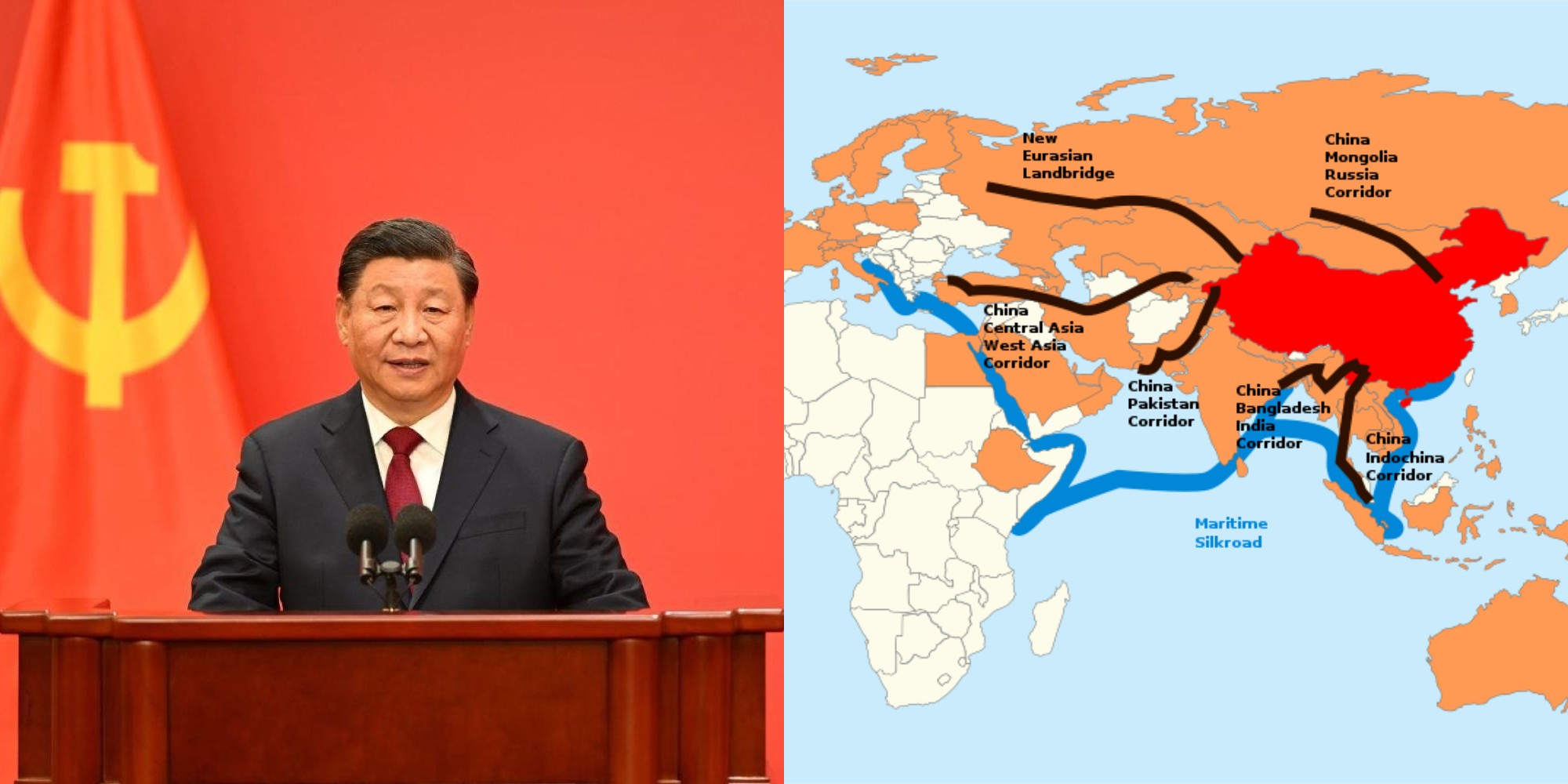OPED By Vaishali Basu Sharma
Representatives from about 130 countries have gathered at the Chinese capital as President Xi Jinping’s signature policy, the Belt and Road Initiative (BRI), which he described as the ‘project of the century,’ completes ten years.
India has boycotted the two-day Belt and Road Forum for International Cooperation (BRFIC) over the controversial CPEC, which is being laid through the Pakistan-occupied Kashmir, and the financial viability of Beijing’s projects in smaller countries.
The two-day summit to mark BRI’s 10th anniversary is hoped to reinvigorate the project. Russian President Vladimir Putin, Hungary’s Prime Minister Viktor Orban, Indonesian President Joko Widodo, Argentina’s President Alberto Fernandez, and Thai Premier Srettha Thavisin are also attending.
The Belt and Road Initiative (BRI), known within China as the One Belt One Road (OBOR), a massive infrastructure project launched in 2013, is the centerpiece of Chinese foreign policy.
In the last ten years, Beijing says it has inked nearly US$2 trillion in contracts worldwide. It covers a wide array of different investments, which include roads, high-speed rail, ports, energy, and infrastructure, among others.
Over ten years, the number of signatories to the project has gone from eight members to 150. But in the decade since its launch, the BRI has been accused of giving out loans for unsustainable projects that became debt traps for smaller countries like Sri Lanka, driving them into a deep economic crisis.
Over the years, the BRI has saddled many nations with vast levels of external debt while, in many instances, it is causing environmental harm and inviting opportunities for corruption.
The BRI today is not the same project it was ten years back. As China’s economic growth is slowing down, the days of seemingly unlimited overseas borrowing are ending. China’s total overseas development finance was just below US$5 billion in 2021, far from the peak lending in 2016 when it was about US$90 billion.
The Covid 19 pandemic dealt a blow to the BRI. With the global economic slowdown, many nations could not repay their loans. Zambia was the first African country to default during the pandemic in late 2020.
Beijing’s role as a creditor has drawn many concerns from Western nations and developing countries. Many governments believe that the BRI is a form of neo-colonialism due to what they allege is China’s practice of debt-trap diplomacy to fund the initiative’s infrastructure projects.
In 2019, suspending the construction of the China-funded US$10-billion Bagamoyo port project, Tanzanian President John Magufuli alleged that China had presented “exploitative and awkward” terms in exchange for financing.
Chinese financiers set “tough conditions that can only be accepted by mad people,” Magufuli told local media. Chinese loans to Africa — a primary focus of the BRI program — have decreased significantly and dipped below US$2 billion in 2022.
Debt traps are an economic dimension of China’s “salami slice” strategy. For instance, China has been pressuring Tajikistan to hand over 1,158 square km of its land because it owes Beijing US$1.2 billion out of a total US$2.9 billion in debt. In the Democratic Republic of Congo, China signed mining contracts with former President Joseph Kabila in an infamous “minerals-for-infrastructure” agreement.
Tense relations with the US have also made association with the Chinese infrastructure project increasingly divisive. In January 2019, French President Emmanuel Macron said, “The ancient Silk Roads were never just Chinese…New roads cannot go just one way.”
Italy, the only ‘Group of Seven’ member, is set to exit the BRI by the year’s end. Despite becoming a BRI signatory, Italy had expressed disappointment that its exports to China had not increased.

Italy’s Defense Minister Guido Crosetto said, “We have exported a load of oranges to China; they have tripled their exports to Italy in three years…Without signing any treaties, Paris sold planes to Beijing for tens of billions in those days.”
The US has been trying to respond by forming counter initiatives like the Blue Dot Network in 2019, the G7’s Build Back Better World initiative in 2021, and the “Free and Open Indo-Pacific Strategy” (FOIP).
Even countries considered allies of China — Pakistan and Malaysia — have expressed a wish to cut down Chinese projects over debt concerns. Following the backlash against the BRI projects in the wake of the economic crisis in Sri Lanka, China has agreed to restructure Sri Lanka’s debt after lengthy rounds of talks.
Chinese concerns are that other nations that have accessed BRI loans will also start demanding debt restructuring.
Another aspect of the BRI is the rise in criminal activities along the routes. According to a report by the Global Initiative against Transnational Organized Crime, the increased connectivity provided by the BRI has afforded organized crime networks new opportunities and ever more favorable pathways for illicit trade.
The report finds evidence that when BRI corridors, routes, and trade hubs are studied in parallel with illicit trafficking routes and hotspots, it is impossible to miss the overlaps and convergences. Odil Gafarov of Chatham House has chronicled the rapid “rise of China’s private armies” — the emergence of a BRI-driven private security industry.
Beijing has been trying to counter the criticism by saying that future BRI projects are likely to be smaller and greener and rely more on investment by Chinese companies than on development loans to governments.
- Vaishali Basu Sharma is an analyst of strategic and economic affairs. She has consulted with India’s National Security Council Secretariat (NSCS) for nearly a decade. She is presently associated with the New Delhi-based think tank Policy Perspectives Foundation.
- The author can be reached at postvaishali (at) gmail (dot) com.




